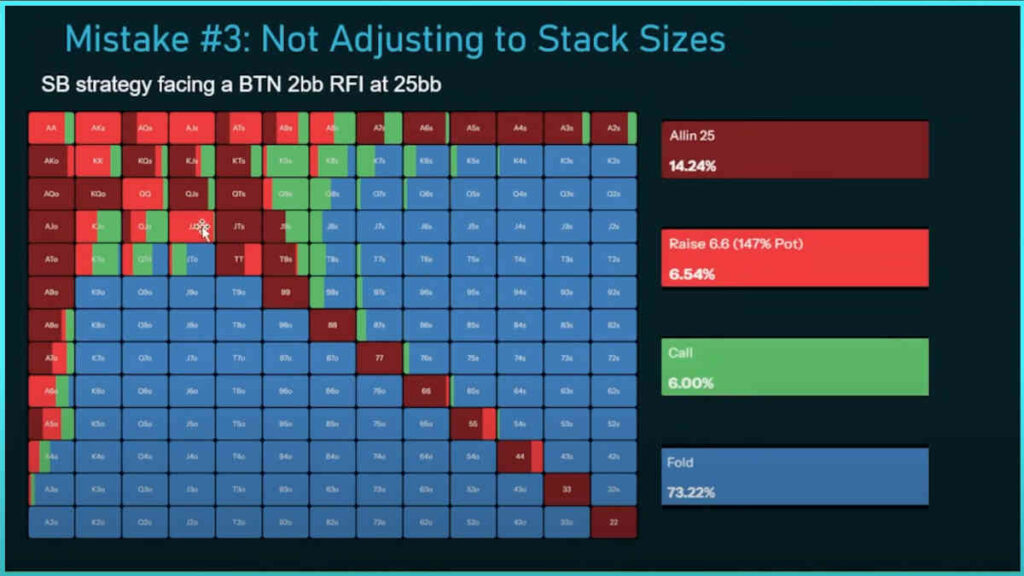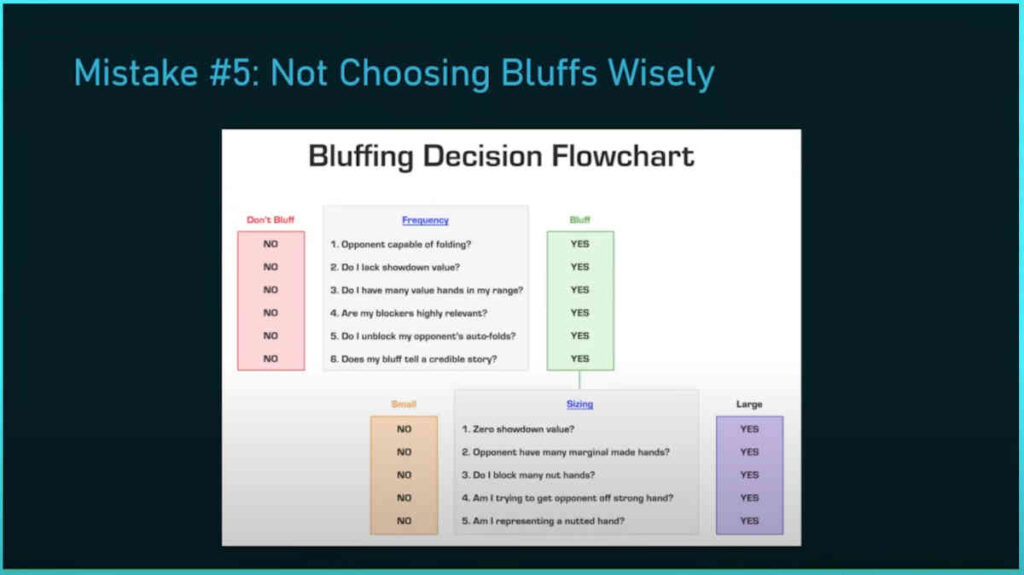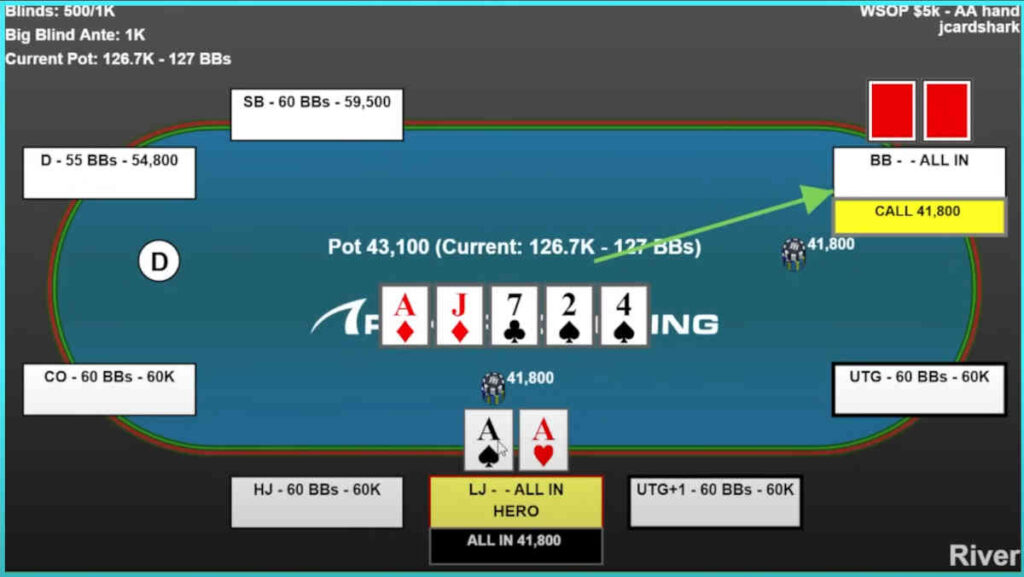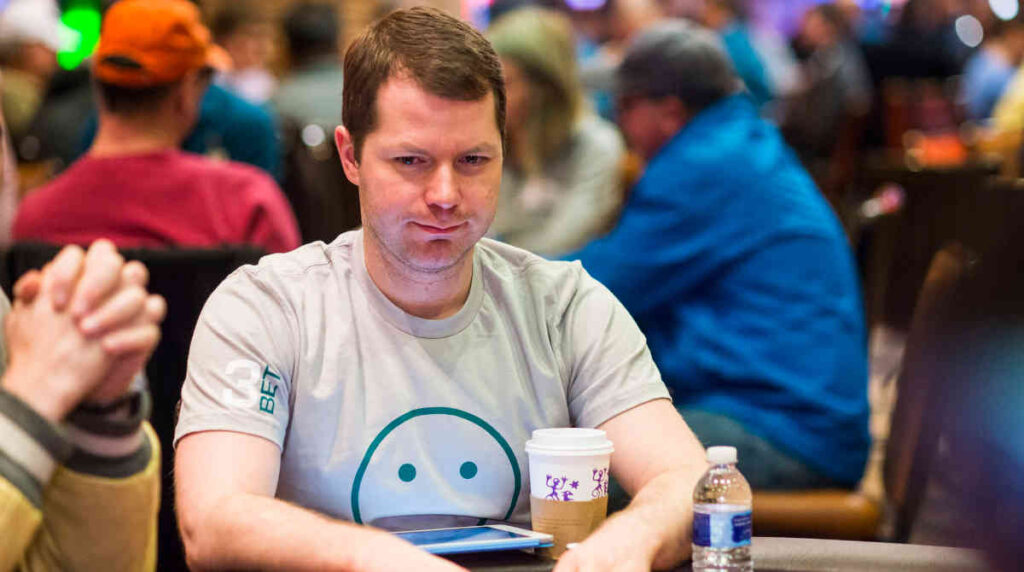The World Series of Poker is here. The biggest festival of the year kicked off a few days ago, and many players are making their way to Las Vegas for their shot at big prize pools and glory.
If you’ll be joining the army of those descending upon Sin City this year, you should take a few minutes to read through this article.
In it, I will focus on 10 critical mistakes you need to fix before you start your WSOP grind, covering some preflop and postflop leaks, as well as some mindset and tilt-management advice.
You should be going in with a focus on playing great and maximizing your EV instead of looking to min-cash in tournaments. So, without further ado, let’s get into it!
Mistake #1: Playing Too Many Hands Early On
When you have 250 big blinds in your stack early on, it feels like it’s no big deal to splash around to try and make some big hands.
However, you need to focus on playing solid, tight-aggressive, deep-stacked poker, making it a point to leverage position and play hands that have the potential to make the nuts.
Too often, players get in trouble with hands like KJo, flopping a top pair on a tricky board and then dusting away their stack in a situation where they’re almost always crushed.
When you are playing deep, and a lot of money goes into the pot, you have to make it a point to have a very strong hand.
Don’t bleed away your stack with weak hands to try and hit it big. Even though you’ll hit a big flop every now and again, you’re still relying on your opponents having something good enough to actually pay you when that happens.
In the meantime, you’ll be bleeding away a lot of chips by calling before the flop and then folding after you fail to connect, so don’t do this. Play good, disciplined poker, focusing on strong hands and advantage of position.
Mistake #2: Playing Too Passively After the Flop
Players at the WSOP are not just too splashy. They also don’t 3-bet nearly enough. By 3-betting yourself, you can take the initiative and isolate weak players, allowing you to play them heads-up and in position, which is a very profitable proposition.
When you adopt this strategy, you will be able to apply a lot of pressure after the flop with uncapped ranges and profit from your aggressive image.
So many players will rather call with a majority of their hands, so on a rare occasion when they do 3-bet, everybody knows they have a big hand. This makes your decision easy, as you can get rid of problematic holdings like AJ and continue with hands that have good implied odds to crack their big pocket pairs.
Mistake #3: Not Adjusting to Stack Sizes
A lot of players have a mental leak where if they lose half of their stack early in a tournament, they feel they are short-stacked and want to get their chips back quickly or bust so they can reenter.
The simple fact is that sometimes you will lose chips early in the tournament – it happens. Stay present, control your emotions, and play your current stack of 30 or 40 blinds, or whatever it may be, to the best of your ability.
If your opponents are all 100 big blinds deep and you have 25 bigs, this lets you take advantage of the fact they are raising with a range that’s profitable against other 100 big blind stacks but not against 25 big blinds.
The fact you can reenter shouldn’t influence your strategy or your decisions, especially during early levels where there is plenty of play left.
If we look at our strategy from the small blind with a 25 big blind stack, it is significantly different from that for 100 or 60 big blinds. We are actually moving all in 14% of the time.

When we drop further to 15 big blinds, we only have two moves: all-in or fold, and we are shoving just over 28% of the time.
So, be aware of your stack size and adjust your strategy accordingly, but don’t be in a rush to dust off your stack just because you got off to a rocky start.
Mistake 4: Not Adjusting to Table Dynamics
There is a wide variety of players coming to the WSOP. Some of them will play loose and crazy, and some just want to play their general poker strategy without giving it too much thought.
If you are playing like everyone else, you will be leaving a ton of money on the table! Instead, you should be making relevant adjustments based on table dynamics.
On passive tables, you want to attack with a lot of small bets before the flop and over-fold when pots get big, and these passive players start firing big bets.
On tables with many loose players, stay disciplined. You should 3-bet wider for value and punish their propensity to enter pots with too many starting hands but don’t go crazy with speculative holdings and bluffs.
Mistake #5: Not Choosing Bluffs Wisely
Bluffing is different at the WSOP than what the GTO strategy suggests. You want to really focus on identifying the correct spots to bluff.
One such scenario is when you have the opponent covered, and you can put them at risk for their tournament life. People who flew thousands of miles just to play a couple of tournaments don’t want to bust on some huge hero call a few hands in.
By the same token, refrain from bluffing in spots where they’ve already invested a lot of chips, and they have you covered, or where calling your bluff will not influence their stack too much.
For example, if you are on a shorter stack and the opponents believe you might be on tilt, they won’t fold a hand like a second pair in a situation where, even if they’re wrong, they will still be left with a half or two-thirds of their stack.
Check out the bluffing chart below to further help you figure out good bluffing spots.

Mistake #6: Playing Poorly on the Bubble
ICM implications are very important at the WSOP, especially near the bubble, because people really want to get into the money.
People celebrate when they get into money at pretty much every WSOP event. Many players are happy they secure a bit of a return on their buy-in, and now they also have a story to tell.
But to make real money and win bracelets, you have to be playing for more. So, near the bubble, classify players at your table. Some will be rocking it up, determined to make it into the money, even if that means blinding out.
Some won’t care about it at all, which changes your strategy too. I once had a player call my button shove with 9-2 because he was fed up with me pushing everyone around on the bubble.
He was “correct” – I had T-6 in that particular instance, but he forgot that his hand mattered, too, and ended up bubbling as my ten-high held up.
Sometimes, it’s fine to squeeze into the money if you are on a short stack, but as a middle or big stack, this is the time to accumulate chips to get you to the final table and eventual victory.
Mistake #7: Not Getting Paid With Big Hands
You must stop slow playing your big hand, especially against players who are not aggressive and who will not be running big bluffs, which will be the case in many WSOP events you enter.
Often, GTO strategy slowplays with big poker hands, which makes opponents who have nothing bluff more often. But your opponents at the WSOP will not do this, so this approach will not work.
Instead, you should think about what their likely hand is and bet an amount you think they can call with that particular type of holding, i.e. a top or a middle pair.

Don’t make a huge 3x pot over-bet, and don’t do a tiny 10% pot wager, either. Think how much they are likely to call – pot, half pot, two-thirds, and go for it to get the max value.
Mistake #8: Getting Fancy Instead of Playing Well
Players often get fancy instead of playing well, getting into ego battles and leveling wars – and this is not necessary.
Someone you think is trying to push you around is probably just running hot and getting good hands, and there is really not much you can do about it.
Making big hero calls that might get you a spot in one of the hand reports is usually not a correct approach. Sure, it works sometimes, but don’t let reporters around the table influence your decisions.
Stick to a good fundamental strategy and realize that the pressure is mostly in your head. Make every decision to the best of your ability, and try to shut everything else out.
Mistake #9: Tilting After Bad Beats
When you run badly at the table, you can have a big edge over a majority of other players – a lot of them get mad, go on tilt, and make big mistakes.
If you can keep your composure, brush it off, and focus on what you can control, you’ll have a huge edge over those who tilt off their stack when they run poorly.
Bad beats happen – this is what you sign up for. Short-term variance is huge in massive field events. Embrace the fact and focus on playing your best. Short-term swings will inevitably happen, and you mustn’t let them influence you.
Mistake #10: Not Enjoying the WSOP Experience
Many of those who go to the World Series of Poker go to play just a few events. Thus, results will mostly be based on luck, even for the best players over a small number of tournaments.
Every year, some players run super-hot – it happens. I’ve had multiple such stretches, but I also had many bad stretches. Of course, bad stretches come more often, as it is much easier to end in the bottom 85% of the field than it is to finish in the top 10% or 15%.
Go with realistic expectations and try to enjoy all of the experiences the WSOP has to offer. Play your best, have fun, and, of course, if you happen to see me there – feel free to come over and say hi!


